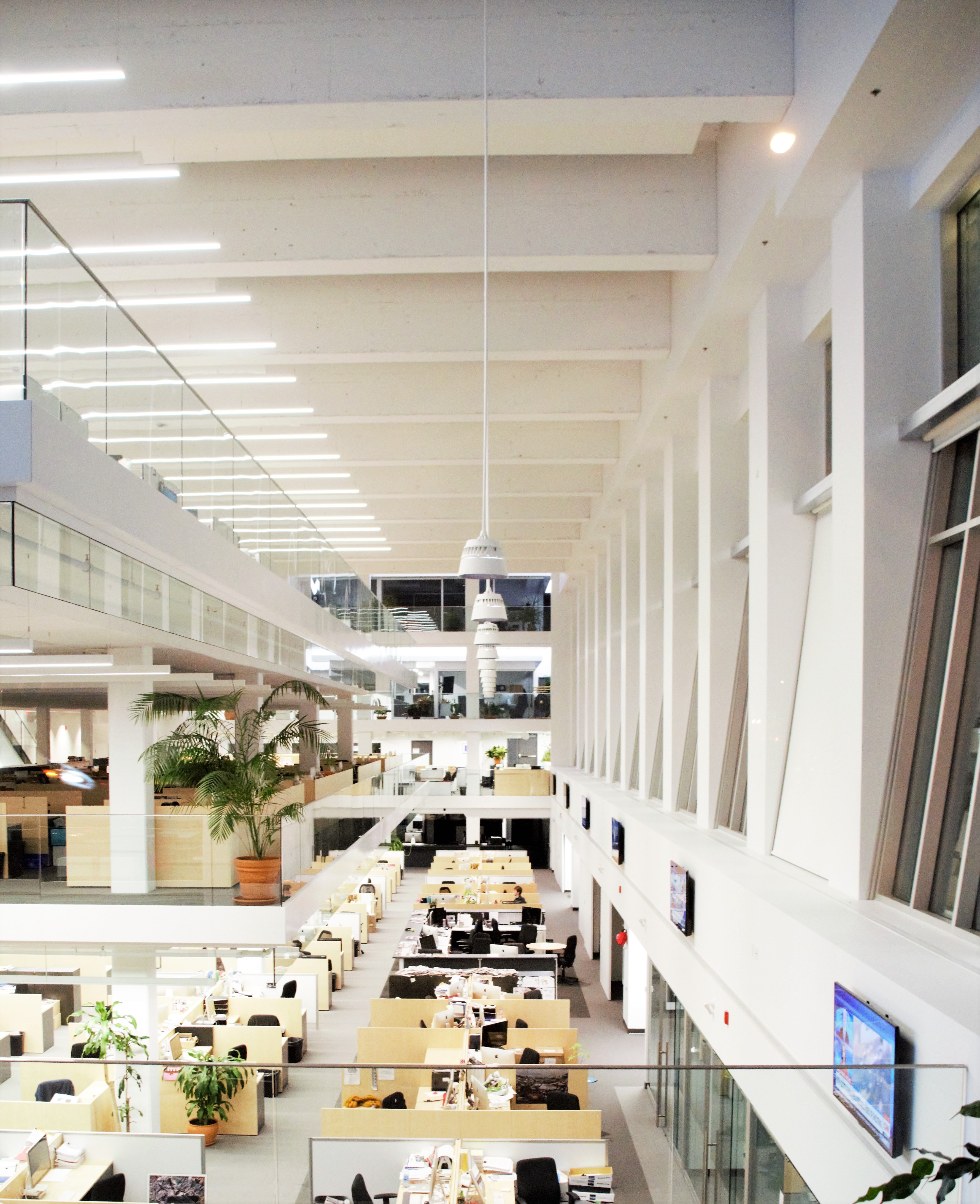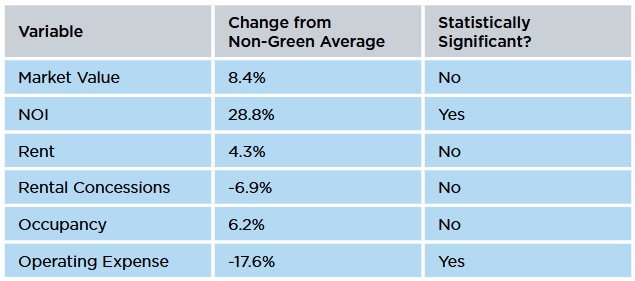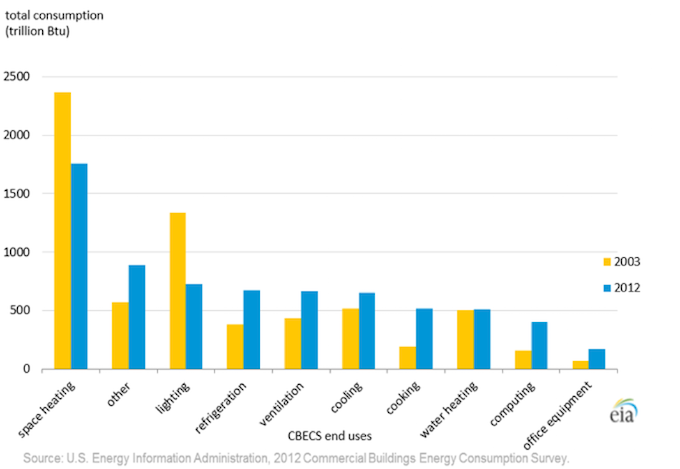Owning and operating energy efficient commercial buildings has proven to lower utility bills, improve occupancy rates, and increase rents and net operating income. Energy efficiency must not be thought as a one-and-done process; it is a continuous build. With each passing year, building equipment becomes more inefficient. It is imperative, therefore, for building owners to continuously invest in new energy efficiency measures to maximize their bottom line. Despite the progress the U.S. has made over the years in energy efficiency, there is still a lot of room for improvement. The following will discuss energy use in U.S. commercial facilities, why top property management firms are energy efficiency evangelists, and actionable solutions that drive results.
Commercial Facility Energy Use
There are approximately 5.6 million commercial buildings in the U.S, which consume about 20% of total U.S. energy consumption. Of these 5.6 million commercial buildings, more than 1.5 million are using energy inefficiently. Thus, there is a considerable market share of commercial properties that would benefit significantly from energy efficiency improvements.
In a May 2017 study published by the U.S. Department of Energy, 131 properties owned by Principal Global Investors with an aggregate area of 25 million square feet were studied. Through linear regression analyses on building, leasing, and financial information, the study concluded “green and energy efficient buildings exhibit stronger financial performance than their non-green counterparts.” The most statistically significant results showed energy efficient commercial buildings have 28.8% higher net operating incomes (NOI) and 17.6% lower operating expenses. Other notable results showed increases in market value, rent, and occupancy by 8.4%, 4.3%, and 6.2%, respectively.
Thought Leadership
Property management giants like CBRE and JLL have grown and been successful in their industry because they know how to create value for the properties they manage. It is no surprise that both companies have aggressive energy efficient commercial building strategies.
David Pogue, CBRE’s Global Director of Corporate Responsibility, has been outspoken about energy efficiency for years. In an interview with The Climate Group, Mr. Pogue stated, “We’ve done a lot of research on this, and what our research finds is that actually green buildings are economically better buildings.” He continues, “. . . In our studies we’ve found that – in particular in the larger US cities – it is now almost impossible to not practice green building practices for a large building or you’ll be left behind.”
Darlene Pope, JLL’s SVP of Energy and Sustainability Services Director, believes that energy efficiency has exponential benefits, both for reducing energy costs and supplementing employee productivity.
“When you consider that companies spend 10 times their energy costs on real estate, and 100 times their energy costs on their workforce, we have to consider how technology impacts the bigger picture . . . . When we improve worker productivity and deliver a better use of space along with the energy savings, the return on investment is exponential.”
Room For Growth
A 2016 report by the ACEEE reports that the U.S. has reduced its energy consumption per square foot by 12% since 2003. However, while some areas have seen significant decreases in energy consumption, other areas have increased due to new business demands.
Source: ACEEE
According to Steven Nadel, ACEEE’s Executive Director, “. . . these findings also indicate that we need to pay more attention to areas of growing energy uses including cooking, refrigeration, ventilation, office equipment, and other miscellaneous uses. As a country, we’ve made enormous strides in reducing space heating and lighting costs; however, plenty of energy reduction opportunity in these areas remain.
Actions That Drive Results
It is clear that the way in which the U.S. has conducted business has changed. This means the way in which we use energy has also changed. As technology continues to advance, building owners have the capability to view, analyze, and control how their buildings consume energy. This has made energy efficiency almost an exact science. Lighting controls, HVAC controls, other equipment controls, and energy management systems make it easy for building owners to make specific and measurable actions to significantly improve building performance and reduce energy costs. Similar to computer or cell phone technology, building technology continues to evolve and become more cost-effective and energy efficient, making it easy for building managers to make smart investments that improve their bottom line. Therefore, energy efficiency measures, especially lighting retrofits, should be considered once every few years to maximize building performance.
Final Thoughts
Approximately 27% of the 5.6 million commercial buildings in the U.S. are using energy inefficiently. The ways in which our country does business continues to evolve, and so too does our building technology. Upgrading lighting, lighting controls, HVAC controls, installing an energy management system, and evaluating other equipment for deficiencies is a tremendous step to take. But, it is important to remember that building equipment deteriorates over time and can become inefficient. Even buildings that have existing energy efficient systems in place may not necessarily be operating efficiently. Therefore, it is imperative for building owners to constantly analyze how their properties consume energy and evaluate new technologies that improve performance. Continuously working to create energy efficient commercial buildings has proven to yield higher net operating incomes, value, rent, and occupancy, while lowering operating expenses.






